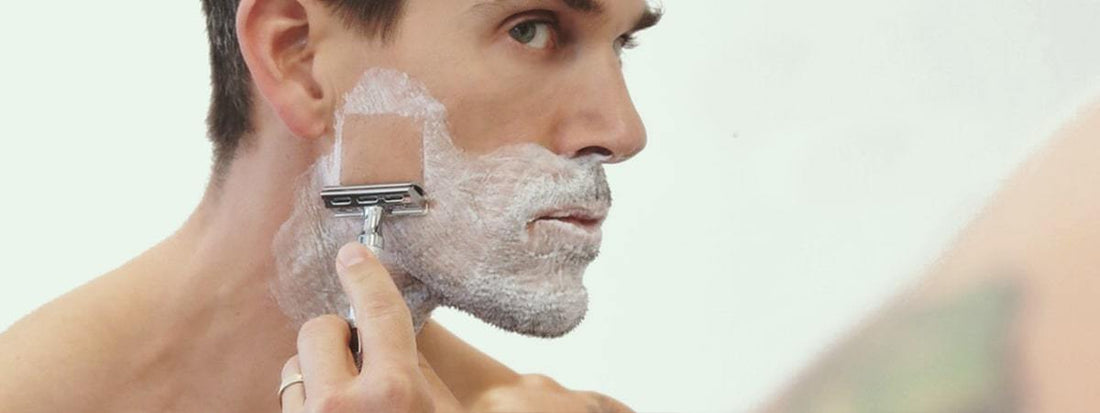Consumers today are making more and more purchase decisions based on how their actions impact the environment. This growing momentum towards conscious consumers is making way for shavers to switch their plastic cartridge razors for a plastic-free safety razor. We have put together this quick shaving guide on how to use safety razors to help you make a seamless transition to sustainable shaving.
Here are the steps in shaving with a safety razor:
- Prepare the skin with hot water and good lather.
- Hold the safety razor at a 30-45° angle with your skin.
- Shave along the grain with virtually no pressure.
- Pull the skin taut and shave with short & straight strokes.
- After shaving, use cold water and apply an after-shave balm.
Let's dig deeper into each of these steps for a complete understanding of safety razor shaving and how it compares to the typical cartridge razor shaving.
1. Prepare the skin with hot water and good lather.
The goal is to hydrate your skin and soften your whisker. It will help you avoid skin irritation and get a smooth shave effortlessly. Use hot water or shave right after taking a hot shower. Use shaving cream and a pre-soaked brush to cover up the shaving area in a nice lather. A good lather is important in using a safety razor especially compared to a cartridge razor so, don’t skip this step.

2. Hold the safety razor at a 30-45° angle with your skin.
Getting accustomed to keeping the razor at the correct angle while saving can be a bit of a learning curve if you are currently using a cartridge razor. This is the biggest difference in shaving habits between cartridge razors and safety razors. Cartridge razor blades and handle are already at an angle. However, in a safety razor, the blade is at 90° to the handle. So, hold the safety razor handle at 30-45° to your skin to expose the blade. This is easy to master and you can practice on your arm if you’re not comfortable trying it directly on your face.

3. Shave along the grain using as little pressure as possible.
Shaving against the direction of hair growth (ATG) is one of the leading causes of irritation from shaving, leading to ingrown hairs and a higher risk of nicks and cuts. Shaving with the direction of hair growth (WTG) reduces the chances of irritation, and since safety razor blades have good exposure you still get a close shave, unlike cartridge razors.
Be gentle while shaving, don’t apply pressure. Safety razor blades are very sharp and the weight of the safety razor handle is sufficient to cut your hairs. They don't require effort or force on your part. You should enjoy this effortless shaving. If you press down, you’ll end up with nicks and cuts on your face. Try holding the safety razor by the tip of the handle to counter your tendency to apply pressure.

4. Pull the skin taut and shave with short & straight strokes.
It’s best to pull the skin taut and use short, straight strokes (1-3 cm). This will help to prevent nicks and cut and tugging of the hairs and clogging of the razor. Flip the razor over as it begins to clog, then rinse it clean with cold water. Shaving with double edge safety razors is beneficial as you can use both sides before rinsing.

Safety razor blades are more exposed and can shave almost all the hairs in one pass, unlike cartridge razors where blades are buried deep and require multiple passes. For an even closer shave, some people like to do a second pass. Apply a fresh layer of lather before taking the second pass.
5. After shaving, use cold water and apply an aftershave balm.
Post-shave, rinse your face off with cold water to close your pores then apply a post-shave balm. It will cool and soothe the skin and prevent any additional infections and irritation.
 Free Shipping for all orders
Free Shipping for all orders Secure payment
Secure payment Free Signature Gift Box
Free Signature Gift Box
